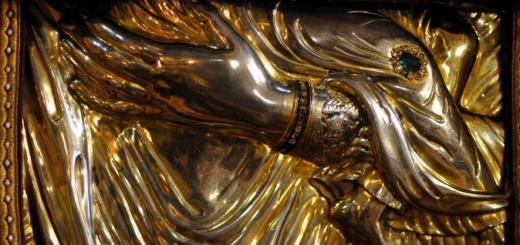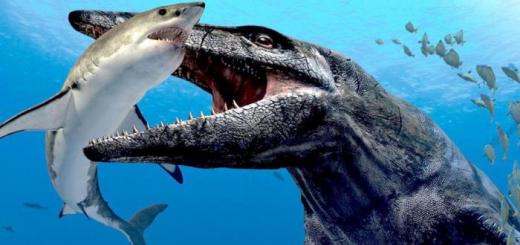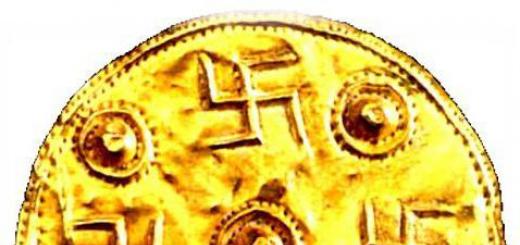November 25th, 2016
1 Darwin's theory has been debunked.
The refutation of Darwin's theory began to appear from the time when the development of science made it possible to study the structure of the cell of the body more carefully. In the 19th century, scientists could not even imagine that the cell of a living organism is so incredibly complex and ordered. If scientists of the 19th century could even then learn about how complex the DNA molecule is, and how all the information about the body is encoded in it, then there would be no discussions for or against Darwin's theory, however, as well as the theory itself.
There are strong enough arguments to be made against Darwin's theory of the origin of man. These are the so-called complex or irreducible organs.
This is an argument against theory which was recognized by Darwin himself. The whole theory was built on the gradual development of a biological organism (uniformism). Darwin recognized the fact that if “irreducible” biological structures are discovered, that is, those, if at least one “detail” of which is eliminated, it will lead to the failure of the entire structure, then his theory of “gradual” development in the course of evolution will suffer a complete collapse. and theory will be refuted. And such bioconstructions were found!
"irreducible" or complex element, which demonstrates the refutation of Darwin's theory, has become a small flagellum for the movement of unicellular organisms. In fact, it turned out to be a complex unique bio-mechanism.
1. A flagellum for movement under water is an absolutely irreducible construction. She simply will not be able to work eating at least one detail. Based on this, the theory of gradual development suffers a crushing collapse. Below is a video film in which scientists, by the way, former supporters of the theory, having studied in detail the complex irreducible structure of the flagellum, came to an unequivocal conclusion: this element could not gradually develop. All of its components are absolutely necessary for the flagellum to function!
2. It is also worth considering the structure of the mammary gland, and the functions it performs. The mammary gland is a separate organ of the female, which performs a very specific function. That is, it produces a liquid substance (milk), the composition of which is ideal for feeding a cub. If we try to “adapt” the theory of uniformitarianism, that is, gradual development, to the formation of the mammary gland, then we must try to imagine the gradual development of the mammary gland over a long period of time. That is, in other words, the mammary gland developed gradually, from generation to generation, until it gradually "developed" in the form of an organ that "began" to produce (finally) what it needed. If we omit the moment that the last reasoning in itself looks absurd, then we need to understand a simple thing:
- random changes in organs, or any part of the body, will develop and be inherited from generation to generation only if the individual with this change will have advantages in survival over other individuals.
Otherwise, such changes will not be inherited.
What follows from this?
And a very definite thing follows: the mammary gland could appear, and be passed on to the next generations, only if it appeared in a form that fulfills its purpose. complete useful feature, i.e ALREADY produces exactly the nutrient substance that the cub needs. Otherwise, another change in the body, useless for the body and survival, would not be passed on to the next generation, since it would not give an advantage over other individuals. Conclusion: the mammary gland is an organ that could not appear due to gradual development.
Evidence for the presence of irreducible (complex) organs in living beings gives a full understanding of the fact that Darwin's theory refuted!
C is a paradox
Let's not forget that at the time when the Darwinian hypothesis was born, scientists had no idea what this or that DNA molecule looked like. With the development of science, scientists gained the opportunity to study the DNA molecule, as a result of which a very interesting paradox was discovered, the presence of which directly contradicted Darwin's theory.
According to the theory, the evolution of species should have occurred gradually, from simpler to more complex. It would be logical to assume that the DNA molecule, which in its essence is an encoded blueprint of the future organism, should have become more and more complicated, as more and more new formed organisms became more complicated. But after studying amoeba DNA, scientists found that the size of the genome of a single-celled amoeba is about a hundred (!!) times larger than the human genome! In addition, DNA in two very similar species can be drastically different. This inexplicable, and apparently contradictory discovery, the scientists called C is a paradox.
It follows that the genome of some species is often much larger than is required to build an organism. A significant part of the genome is not involved in the definition and formation of the physical body at all.
These scientific discoveries are in no way consistent with Charles Darwin's theory of evolution. And vice versa - refute it as a theory.
Supporters of Darwin's theory are of the opinion that the opinions of scientists deserve much more attention than the opinions of individual unknown critics of Darwinism. But there are many scientists, and the best of them, and recognized by the entire scientific world, deserve the Nobel Prize. So, among the Nobel laureates, they spoke extremely critically about Darwin's theory of evolution: Ernst Chain, Nobel Prize winner in Physiology or Medicine; Richard Smalley, Nobel Laureate in Chemistry, Nobel Laureate in Physics, Arthur Compton. The opinion of scientists of such a rank cannot but be authoritative.
Darwin's theory FOR and AGAINST. Arguments.
Charles Darwin was not a professional biologist. His entire education was reduced to two years of lecturing at the Faculty of Medicine, University of Edinburgh. The evolutionary ideas he proposed were only the result of conjecture without any definite evidence. And yet, despite this, the assumption known as Darwin's theory of evolution not only came into being, but also became the main, official view in science.
This theory was based on the principles of uniformitarianism - gradual uniform development. She was far from such concepts as God or the Creator, a rational first cause.
It is interesting that Darwin never studied biology professionally, showing only an amateur interest in flora and fauna. In 1832, Darwin, as a volunteer, got on the research vessel Beagle. The British government organized an expedition during which the ship was supposed to visit different continents. Charles Darwin, once in the Galapagos Islands, was amazed at the abundance and diversity of the animal world. He was especially interested in watching finches.
One of the advantages of Darwin's theory was that while observing birds, he noticed that there are a huge number of bird species, and they all differ in their beaks. Darwin suggested that the length of the beaks depends on environmental conditions. Based on this, he came to the conclusion that living organisms were not created by God separately, but traced their lineage from a single ancestor and only changed over time under the influence of local natural conditions.
After observing the finches, Darwin drew conclusions that he “tried on” for the origin and development of all life on Earth.
If we consider the development of all life on the planet, using Darwin's theory, then it reveals many huge "holes".
Arguments against Darwin's theory.
As arguments "against" Darwin's theory of evolution, the absence of transitional species in the chain of development of the animal world is striking. There are also no transitional species between great apes and humans. The found remains of Australopithecus, who lived about three million years ago, seemed to fill in the missing picture with a transitional view. But the remains of a monkey were discovered, with a more developed brain than that of Australopithecus, but nevertheless living about six million years ago, that is, much earlier than Australopithecus. This disproved that Australopithecus was a transitional species ("Destroying Darwin's Theory" documentary).
If we consider mammals, then they are generally “torn off” in development from other animals that lay eggs. It is hard to imagine how long it takes for an egg-laying animal to "evolve" from "theory" into a mammal. And yet, no remains of a transitional species have been found. Findings of dinosaur bones that lived hundreds of millions of years ago are not uncommon. And for the entire later period, when mammals must have developed from egg-laying animal species, no evidence has been found that would show the course of the "evolution" of mammals.
The apparent absence of transitional forms, and a refutation of Darwin's theory of evolution, is shown to us by an ordinary giraffe. This animal is distinguished from all by its long neck. The neck is made up of vertebrae, which have a bony structure. Bones are best preserved in the rock, and therefore, bone remains are the absolute majority among the finds of paleontologists. Let's pay attention to the fact that paleontologists can present us with the remains of animals that lived much earlier (according to evolutionists) than the time of the appearance of mammals. This means that the time during which the long neck of the giraffe had to “evolve” from the short one should have left accessible temporary layers in which transitional forms with an increasing neck simply had to be preserved! The result is null.
At the end of the 19th century, a discovery appeared that was supposed to be a huge plus and an argument "FOR" Darwin's theory of evolution.
In Germany, near the city of Eichstätt, the remains of an ancient bird were found in a limestone quarry. These remains were sold to the museum. Then, in the same quarry, the remains of another bird were found, which were more complete, had a head and a neck. They were also sold at auction for very good money. It is noteworthy that in the jaw of the bird there were teeth, like those of a lizard. These remains rightly claimed the title of "transitional species" between reptiles and birds. So there was - Archeopteryx, a transitional species that supporters of Darwin's theory placed in school textbooks. But we have already mentioned the meticulousness of scientists (otherwise they would not be scientists). And although evolutionists use scientists as "proof" of research, it is scientists who debunk fakes or just plain cases of fraud. Since 1983, British scientists have begun to question the reality of the bird, the reptile Archeopteryx. Eventually, a group of scientists were given permission to study Archeopteryx using carbon dating, which would give an accurate date to the elements of Archeopteryx. After careful research, Archeopteryx - as a proof of Darwin's theory (as a transitional species) was no longer exhibited in the halls of the museum. Research results are fake!
As it turned out later, the owners of that very limestone quarry made money in this way more than once. They knew that there was a huge demand for the transitional views of Darwin's theory of evolution. As you know, demand creates supply.
2. Evidence of Darwin's theory.
Nevertheless, there were several discoveries that for decades were perceived by supporters of Darwinism as direct evidence of the theory.
In 1912, in London, at a meeting of the Geological Society, Charles Dawson presented a find that, according to him, could claim the very “transitional species” from the great ape to man. At the meeting, Dawson said that in the summer of 1912, he received from a worker who worked at a quarry in Piltdown the remains in the form of a human skull. That same summer, Dawson explored this quarry, where he discovered part of the lower jaw. Based on the study of his findings, he collected parts of the skull, and made the following conclusion: the remains belonged to a creature similar to a modern person, but there was a difference in the attachment of the skull to the spine, the volume of the skull was less than that of a modern person. The jaw was more like that of a great ape.
Naturally, such a find could not but arouse the keen interest of scientists. The British Medical College again made a reconstruction of the remains of the skull. The result was somewhat different to say the least. The skull was almost completely similar to the skull of an ordinary modern person. Three years later, a paleontologist from France made the final conclusion that the lower jaw of the "Piltdown Man" belongs to a monkey. this finally turned the discovery of Charles Dawson, from a weighty argument "FOR" Darwin's theory, into NOTHING. Subsequently, it was precisely established that the jaw belonged to an orangutan who lived about five hundred years ago. Moreover, studies under a strong microscope showed that the teeth were filed in order to look more like human teeth. Thus, the "find", but in fact the usual fake of Charles Dawson, did not become, contrary to the desire of the Darwinists of that time, an "iron argument "FOR" Darwin's theory.
Has Darwin's theory been proven?
Various researchers did not lose hope of finding evidence of Darwin's theory, in the form of the remains of a transitional species. In 1922, in Nebraska, America, a tooth was found (!), which, according to the local director of the museum, was a tooth of a transitional species from ape to man. For six years, supporters of Darwin's theory of the origin of man were in a state of emotional upsurge. Until in 1928, to their great dismay, after a thorough examination of the tooth, it was found that the tooth belonged to a pig, the species of which has become extinct and is no longer found. If any of the supporters of the theory still doubted the correctness of this conclusion, then in 1972 representatives of this considered extinct species of pig were discovered in South America.
Another argument "FOR" Darwin's theory for a long time was the discovery of a certain Dubois, who in 1891 on the island of Java found a part of the skull, a thigh and several teeth, which, according to him, should have belonged to an ancient person. He called it "Pithecanthropus erectus". But there were doubts that the bones belonged to one person. There were opinions that the thigh was a monkey bone at all. Naturally, this grandiose confirmation of Darwin's theory should have been a fundamental argument "FOR" the theory of the origin of man from apes, and this had to be sorted out. After 15 years, an expedition from Germany went to Java in order to find the real remains of a transitional species. Having dug up thousands of cubic meters of earth, they dug up several dozen boxes of bones, but these finds yielded nothing. There was only one conclusion: the discovery of Dubois was from a place where volcanic lava spread, which contains many mixed remains of animals and people.
In 1922, Dubois admitted that where he found his find, he also found other human skulls. But they were not inferior in size to the skull of a modern person. Naturally, therefore, he did not mention those turtles anywhere earlier, as this would have destroyed his "sensational" find. Well, in refuting this "argument" for Darwin's theory, already in 2003, Japanese scientists who studied the skull of the "Javanese" man made an unequivocal conclusion that this skull belongs to a type that cannot be a transitional species in human evolution.
One of the most famous arguments "FOR" Darwin's theory, and a big plus, despite the disadvantages of this theory, should have been the theory of "recapitulation" approved by the German naturalist and philosopher Heinrich Haeckel. The essence of this theory was that in the state of the embryo, the human embryo, as it grows, acquires forms similar to those of animal embryos. But scientists are people who do not take everything on faith. They need to check everything, and either confirm or deny. In practice, it turned out that the supposedly “gills” of a human embryo at an early stage of development are the goiter and parathyroid glands that are formed in this very place, as well as the middle ear canal. Haeckel, like many supporters of Darwin's theory, for some reason "saw" a fish tail in the lower part of the embryo's spine. In fact, the spine is formed first, and only then the bones of the hind limbs begin to form. And there is nothing to do with "evolution" here, as well as evolution itself in this form.
In 1997, British embryologists took detailed photographs of the development of thirty-nine types of embryos. After comparing with Haeckel's photographs, scientists were simply in shock. A world-famous scientist (Haeckel) copied human embryos and passed them off as animal embryos, claiming their “obvious” similarity.
So, another argument "FOR" Darwin's theory turned into a criticism of his supporters.
There are also scientific discoveries that point to a clear refutation of Darwin's theory.
The latest archaeological finds, confirming that man lived on Earth hundreds of millions of years ago, also do not fit into Darwin's theory (section "MODERN SCIENTIFIC DISCOVERIES" ). Along with outright falsifications, there are many archaeological finds in America, Mexico, Armenia, in the form of burials, with human remains, which reached a length of up to five meters. The remains of great apes of this size, from which these giants were supposed to "evolve", have not been found. Also, there is a lot of evidence that a person lived several hundred million years ago. Human footprints were found next to dinosaur footprints, research confirmed the authenticity of the finds. Naturally, official science is in no hurry to comment on such discoveries that destroy "fundamental", officially recognized theories. These discoveries are about collapse of Darwin's theory.
3. Why doesn't official science refute Darwin's theory?
But, despite the increasing number of inconsistencies with the true state of things, official science is in no hurry to refute Darwin's "theory". To recognize the inconsistency of this theory means to recognize the incompetence of scientists who have relied on this theory all their lives as a dogma. But it is on them that the official refutation of Darwinism depends. And what to do with candidate and doctoral dissertations, which were based on the theory of evolution. Therefore, it is necessary to deprive the scientific degrees of many respected figures of science. Scientists need to have a certain courage to admit that they themselves have been in error all their lives, and teach this to others.
There is a certain opinion that the so-called discovery of Darwin was prepared and planned in advance. It is no coincidence that this "theory" was born in England. The fact is that England in the nineteenth century actively participated in the colonization of the peoples of Asia and Africa. But to fully disperse the flywheel of the enslavement of other peoples, moral and ethical principles, which have always been based on religion, did not give. The religious commandments “do not steal” and “do not covet anything that belongs to others”, to put it mildly, did not really fit into the actions of the colonialists, who were difficult to stop. It was necessary to urgently change the authorities of religious scriptures, to more suitable, so-called "scientific" discoveries. The deed was done. Religious views have gone far into the background. And the fact that man originated from an animal, which means the principle of natural selection “survival of the fittest”, from the animal world, can (and most importantly, it is necessary!) be transferred to the world of people. Is it a coincidence that after Darwin's "discovery", and its recognition as official science, in the next hundred years, such theories as fascism and other ... isms were born, which resulted in the most bloody wars, and revolutions, with the largest number of victims, of known throughout history. There is such a thing as "natural selection". But few people realize that this law of survival also works among human societies. Read about it in the article on the site The Meaning of Religion” (see the site menu).
And here is a confirming document that the so-called “Darwinian theory” has nothing to do with science in principle: an extract from the Masonic document “Protocol No. 2:” ... Do not think that our statements are unfounded: pay attention to the successes of Darwinism that we have adjusted, Marxism, Nietzscheanism. The corrupting significance of these trends for the goy minds should at least be obvious to us.” From this extract it is obvious that the so-called "Darwin's theory" is a well-planned action of the Masonic secret society.
So: Darwin's theory is not true and refuted. However, if someone does not agree with this, then this theory (by the way) is NOT EVEN PROVEN YET. So in order to disagree with her refutation, you just need to prove it.
Recent Posts from This Journal
People, unfortunately, forget about God's punishment for debauchery: how sin caused the death of an entire city
We are talking about Pompeii - the city of sin and depravity, buried many years ago under the lava of the volcano Vesuvius. According to historical documents, this city until…
 "CINEMA CONSPIRACY INDUSTRY": "CINEMA, TO WHOM ARE YOU SELLING YOUR SOUL?" Part 1.
"CINEMA CONSPIRACY INDUSTRY": "CINEMA, TO WHOM ARE YOU SELLING YOUR SOUL?" Part 1. Doctors of a maternity hospital in Bashkiria publicly laughed at their salary
Doctors of a maternity hospital in Bashkiria publicly laughed at their salaryThe doctors of the Salavat maternity hospital greeted with laughter and applause the report of the director of the medical institution Albina Fatykhova on their salary. It happened on March 25th...
 Social maps of Moscow and St. Petersburg are integrated. And it will all end with an apocalyptic inscription 666
Social maps of Moscow and St. Petersburg are integrated. And it will all end with an apocalyptic inscription 666The Moscow authorities are ready to discuss technical and methodological issues related to the integration of social maps of the capital and St. Petersburg. This was reported…
 Fall orphans underground. Putin's RFI doesn't need you
Fall orphans underground. Putin's RFI doesn't need youThe orphanage began to sink into the ground “Our government does not believe that we are orphans, that we are just people ...”, - in the Saratov region ...










